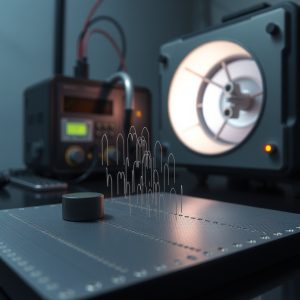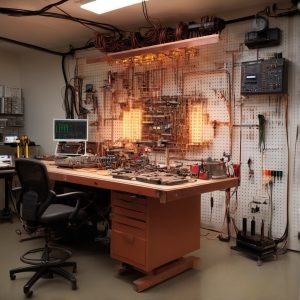
There are several features and functions of our visual system , by which we can observe the world as a three-dimensional projection. These functions are: convergence ( simultaneous movement of the eyeballs toward the line of central through simple muscle spasm medial eye , innervated by the third cranial nerve , this phenomenon occurs when approaching an object , such as a finger tip of the nose to the surrounding areas ) , accommodation (the phenomenon of adaptation of the eye to watch objects located at different distances , the modification on the appropriate selection of visual acuity ) and the ability of the brain fusion , it is a combination of two images that are supplied by each eye separately in a spatial image .
We can distinguish several types of devices used for viewing in three dimensions . They are called colloquially 3D glasses . Contrary to appearances , the history of such devices is not so young . The earliest glasses of this type have already been invented in the nineteenth century and named them anaglyph glasses (the name comes from the system in which they operate , these glasses – is a anaglyph system) . The method is probably all known and recalls the first magazines , which placed images printed by this method . Viewed later through special glasses with fragments of colored paper , transparent film . The principle is very simple. Overlap two images – red and blue. It may also be a different set of colors – green and cyan . Another necessary component of the image are complete reception of the glasses. The stained glass are respectively the colors used , one color permeable to one eye and the other to the other eye . Then our brain combines these images with each other by imposing ( making fusion ) , and we see a whole as a three-dimensional image.
This technology has , of course, a few pluses and minuses . The biggest advantage of this method is its universality and minimal production costs glasses necessary for viewing the created image . A very important issue is that we can use anaglyph on multiple media – paper (poster, newspaper , page books ), digital ( TV screen , monitor, movie screen ) . The downside to this method is that in spite of all the poor quality of the images you see . Restore the full range of color is not feasible . We often have the impression that the image corresponding to the treated this technology is almost gray . The second drawback of this technology is unfortunately impossible to completely separate themselves from the two images , which captures the second eye means not intended for him. Despite all these limitations , anaglyph glasses are permanent, in which equip the team working on the film . Only this kind of glasses allow you to assess how big is the difference shifts images with respect to themselves. This is an extremely important part of the work on the film S3D because it allows you to control the forces of 3d effect . Using this equipment is also very easy to detect some other errors arising, for example, when selecting cameras .
The next step in the three-dimensional glasses technology in the years thirties of the twentieth century . Saw the light of day then the next method of obtaining a three-dimensional effect . It utilizes a phenomenon called polarization of light. With it , you can give the light a certain direction. Therefore screened using polarizing filters , two images : one for left , one for right eye. There are two ways to obtain polarization – can be done using specialized projectors in the cinema or the filter will imposed on the screen. Thus obtained two polarized images, each in a different way. On the surface spectacles placed analogous polarizing filters , so that each eye receives the correct image .
A major downside of this technology is a significant reduction in resolution , brightness and contrast of the projected image . This is because that single eye is able to see really only half of the display frame. Watching a film shot in Full HD ( 1080p width ) , a single eye is able to see only 540 lines .
A further disadvantage of this solution is the necessity of keeping the head straight. If we do not do this , a dozen or so edge display details can be jagged , distorted . Furthermore , looking at the image shot with the help of this technology may result in a split . These phenomena occur most often when we are dealing with horizontal polarization . The effect is generally noticeable increasingly used in cylindrical polarization , where instead of being divided into lines , is divided into divisions.
Costs for cinema owners who decide to install a system of polarizing incur significant costs associated with adjusting the screen to display images. It is required to cover a special silver screen surface. You should also purchase a special projectors . However, costs are rapidly returned by the fact that in contrast to the rest of the equipment , glasses used in this method are relatively cheap. They cost a few pounds per unit – in the event of damage or theft of cinema will not suffer significant losses . These glasses are also lightweight and easy to use and not too tired eyes. Systems polarizations begin to enjoy popularity also in homes . With the price of glasses , manufacturers state in the set a few pairs . But keep in mind that the glasses of this type require meticulous care and maintenance.
Another solution utilizes 3D active shutter glasses . Here, the displays on the screen alternately at short intervals image designed for one or the other eye. Glasses these glasses are very interesting element . To make them uses a thin crystal that reveals and obscures the very high frequency image respectively in the left and right eye. This requires proper synchronization with the display , as blackout glasses must comply with the appropriate side of the glasses. Image frequency works here in our favor – the bigger it is , the less visible is the effect of disturbing flicker , and our eyes get tired me .
This system, when it comes to the quality of the projected three-dimensional 3D image is probably the best . If our decision is influenced mainly by the quality of the image , we should decide on this particular type of glasses. However, we must realize that this system has many flaws that can not be overlooked. The first is the question of power – safety glasses must have its own batteries or be connected to a stationary power source . What is needed is the ability to communicate with the display using radio waves or infrared light. All this makes the weight of the glasses increases significantly. Price glasses also leaves much to be desired. Pick an image sometimes can be confusing , the flicker , which we mentioned earlier. Glasses also tend to dim the image, often resulting in the need to increase the brightness of the TV .
To meet the numerous defects , which, despite all carry glasses , researchers are working on 3D image display system which does not require the use of glasses. Today, the most popular are two methods . This is a method of blocking the parallax images, which filters received through the eyes by means of special micro- cracks in the lenticular screen, and the technology which separates the image using a lens disposed on a surface of the screen.








